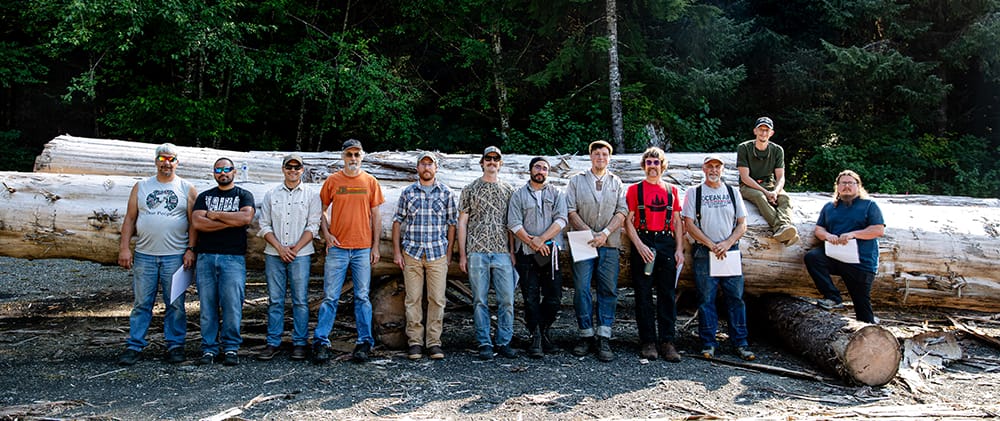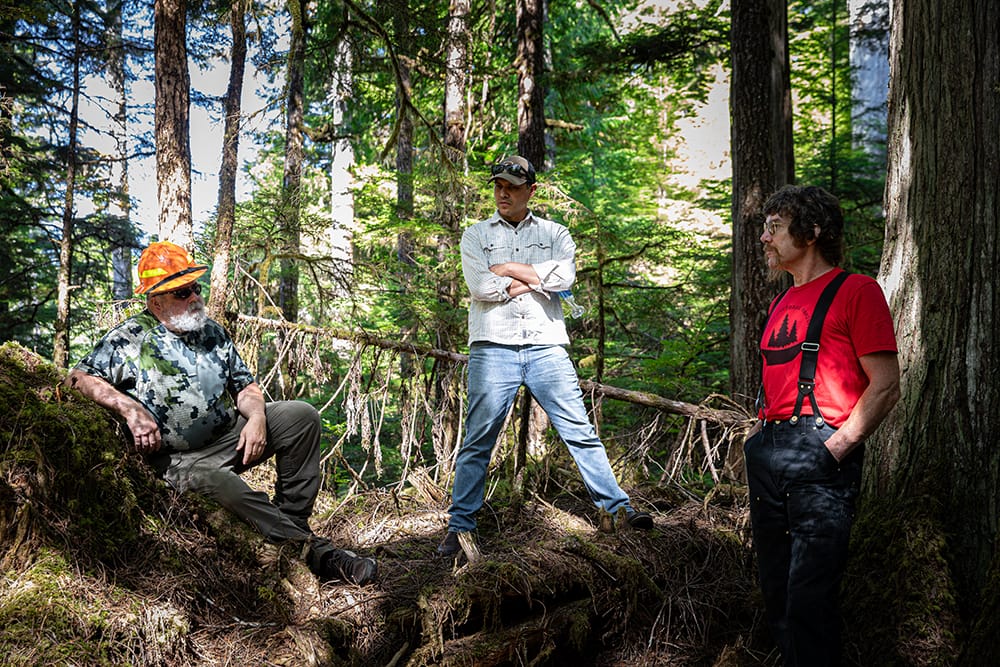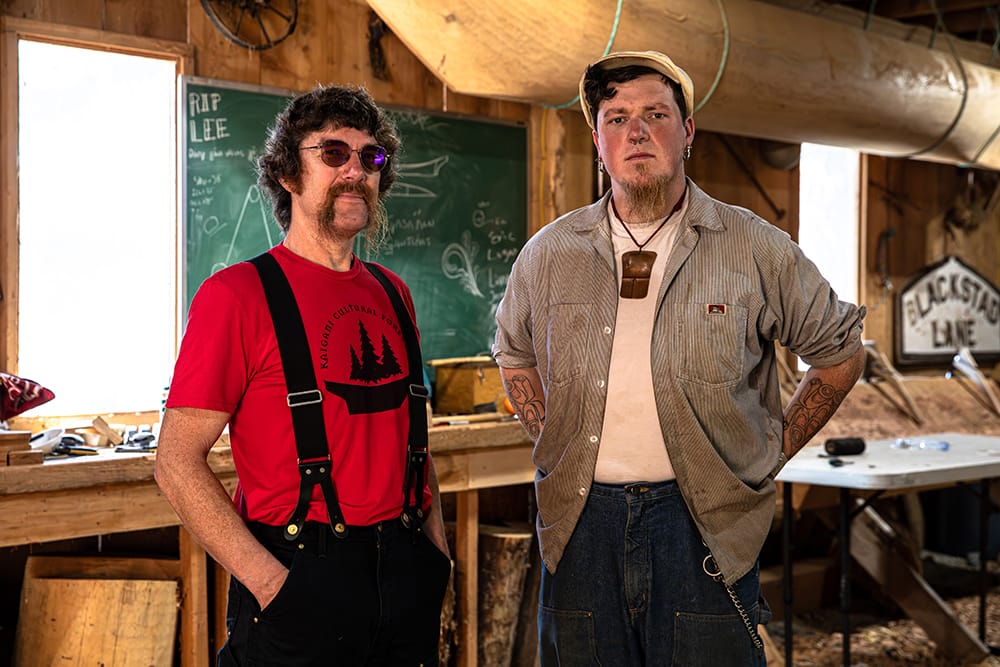Sealaska, in partnership with the Organized Village of Kasaan (OVK) and the U.S. Forest Service (USFS) out of Thorne Bay and Craig, spent a week out on Sealaska lands in West Polk inlet this August, working to locate red and yellow cedar trees. The goal of the visit was to identify trees suited to serve as “monumental logs” in support of cultural community projects.

The project is part of an ongoing partnership between the OVK and the USFS that began more than two years ago. Sealaska was invited to join the partnership to help support their combined efforts to better identify potential monumental logs.
Each day over the course of the week, three sets of crews walked through one of 33 parcels of timber. Participating surveyors representing each entity made up each crew: Jason Gubatayao, Jack Beckman, Frank Peratrovich and Gary Mills of Haa Aaní Limited, representing Sealaska; six USFS timber cruisers; and Stormy and Erick Hamar, representing OVK. The Hamars brought a wealth of cultural knowledge to the expedition, sharing their experience as Haida carvers and canoe makers with the other partners.
At the end of the week, all crews shared their data with the group, comparing their inventory to triangulate the location and size of each monumental tree. About 50 trees were identified including, red and yellow cedar and spruce, for potential cultural use.
More work to identify additional monumental trees could be done in the future, as not all the 700 acres Sealaska holds in West Polk Inlet were examined.

